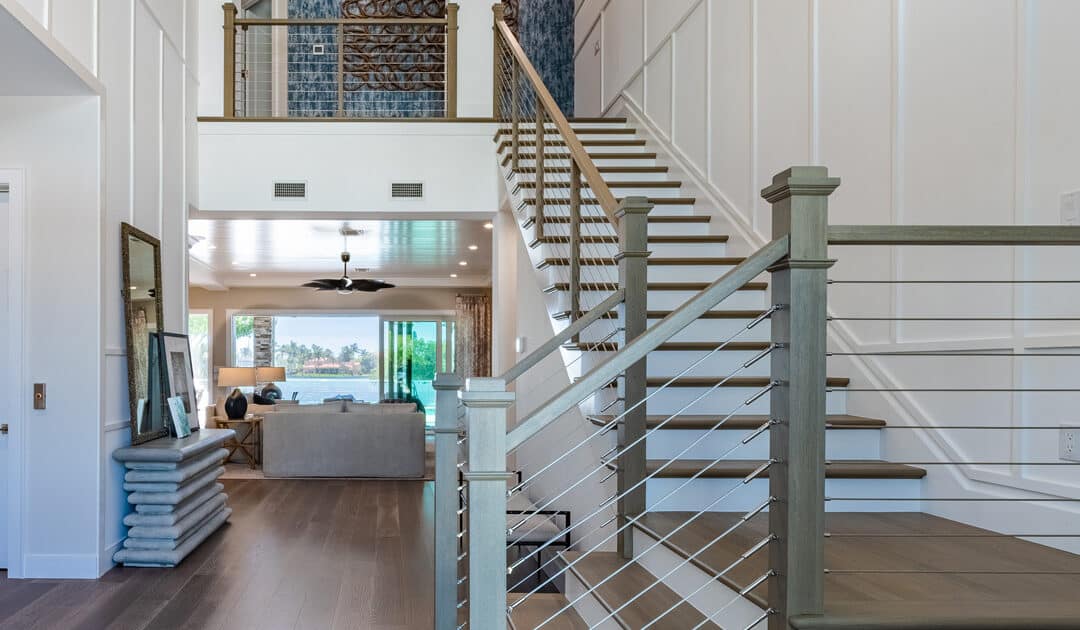Building a new home is one of life’s most exciting ventures—yet it can be equally overwhelming. From nailing down architectural plans to choosing each finish and fixture, the process involves countless decisions that shape your future living space. That’s where an interior designer comes in. Far more than just picking paint colors and fabrics, designers bring a blend of creativity, technical knowledge, and strategic planning to every project. By collaborating with a designer right from the start, you’ll enjoy smoother construction, personalized solutions, and long-term cost savings.
1. A Clear Vision and Cohesive Plan
Conceptualizing Your Lifestyle
When you begin construction on a new home, you have the opportunity to create a space that caters to your every need. However, turning abstract ideas into a cohesive plan can take time and effort. Interior designers specialize in understanding how you live: Do you need a family-friendly mudroom or a chef’s kitchen for entertaining? By aligning the home’s flow with your lifestyle from the outset, a designer ensures that every inch of space serves a purpose.
Preventing Design Conflicts
A well-thought-out design plan reduces the risk of conflicting decisions and mid-build changes. Designers have an eye for how different elements—like flooring, cabinetry, lighting, and color palettes—interact. By reviewing architectural plans early and offering input on layouts, designers prevent costly alterations down the line.
2. Cost-Effective Decisions
Avoiding Expensive Mistakes
One of the biggest myths about hiring a designer is that it’s simply a luxury expense. In reality, this level of professional guidance often pays for itself by eliminating expensive missteps and adding value to the custom home investment. Imagine installing flooring only to discover it doesn’t complement your kitchen cabinets or ordering the wrong-size furniture that ends up obstructing walkways. An interior designer’s trained eye and expertise help you avoid these pitfalls.
Leveraging Industry Connections
Designers have established relationships with suppliers, contractors, and artisans, often securing better prices or early access to premium materials. Whether it’s sourcing custom furniture or finding quality finishes at competitive rates, these partnerships save you money and elevate the final result.
3. Seamless Collaboration with Your Builder
Speaking the Same Language
From technical drawings to on-site walkthroughs, designers interpret builder jargon and translate it into actionable design decisions. This partnership fosters effective communication between you, the builder, and any subcontractors involved. When everyone is on the same page, the construction process moves more smoothly—and you’re less likely to face unexpected delays.
Real-Time Problem Solving
Designers can spot potential issues before they become major headaches. For example, they might catch that an outlet placement won’t be convenient for a future reading nook or realize that the lighting layout needs adjusting to showcase architectural features. These timely insights help keep the project on track.
4. Tailored, Functional Spaces
Personalization Meets Practicality
Building a home is about more than square footage; it’s about tailoring the space to your family’s daily rhythms. Maybe you need a bright, open-concept living area for large gatherings or a tucked-away study for remote work. An interior designer helps ensure that every choice—from the layout to the hardware—aligns with how you live. This personal touch not only boosts everyday comfort but also enhances your home’s value in the long run.
Future-Proofing Your Home
A designer can look ahead to your evolving needs, be it the desire for extra storage, planning for accessibility, or creating flexible spaces that can transform as your lifestyle changes. By anticipating these needs early in the build, you’re saving money—and stress—later on.
5. Elevating Aesthetics and Flow
Consistent Design Language
Interior designers excel at weaving a consistent narrative throughout a home’s interior—from the foyer to the master suite. This cohesive approach ties together diverse spaces, making your home feel harmonious and well-planned rather than a patchwork of design decisions.
Thoughtful Details
Whether it’s the placement of light fixtures or the choice of cabinet hardware, a professional eye brings polish to every detail. Designers know how to elevate your home with subtle touches that might otherwise be overlooked, creating a space that’s both visually stunning and highly functional.
6. Peace of Mind and Enjoyment
Ultimately, collaborating with an interior designer alleviates the burden of building a home, turning a potentially stressful process into something truly inspiring. You’ll gain access to professional guidance, a clear decision-making pathway, and a reliable partner for generating new ideas. Additionally, you’ll have the chance to focus on the enjoyable aspects—such as discovering your unique style and observing your dream home take shape—while your designer navigates the intricate details.
Building a new home requires a significant investment of time and resources. Partnering with an interior designer from day one helps protect that investment, streamlining the process and ensuring that the final result truly reflects your vision. A designer’s expertise is invaluable, from preventing costly mistakes to delivering a cohesive, tailored environment. Ultimately, by bringing their eye for detail and holistic perspective to the table, you set the stage for a beautiful, functional home you’ll love for years to come.
